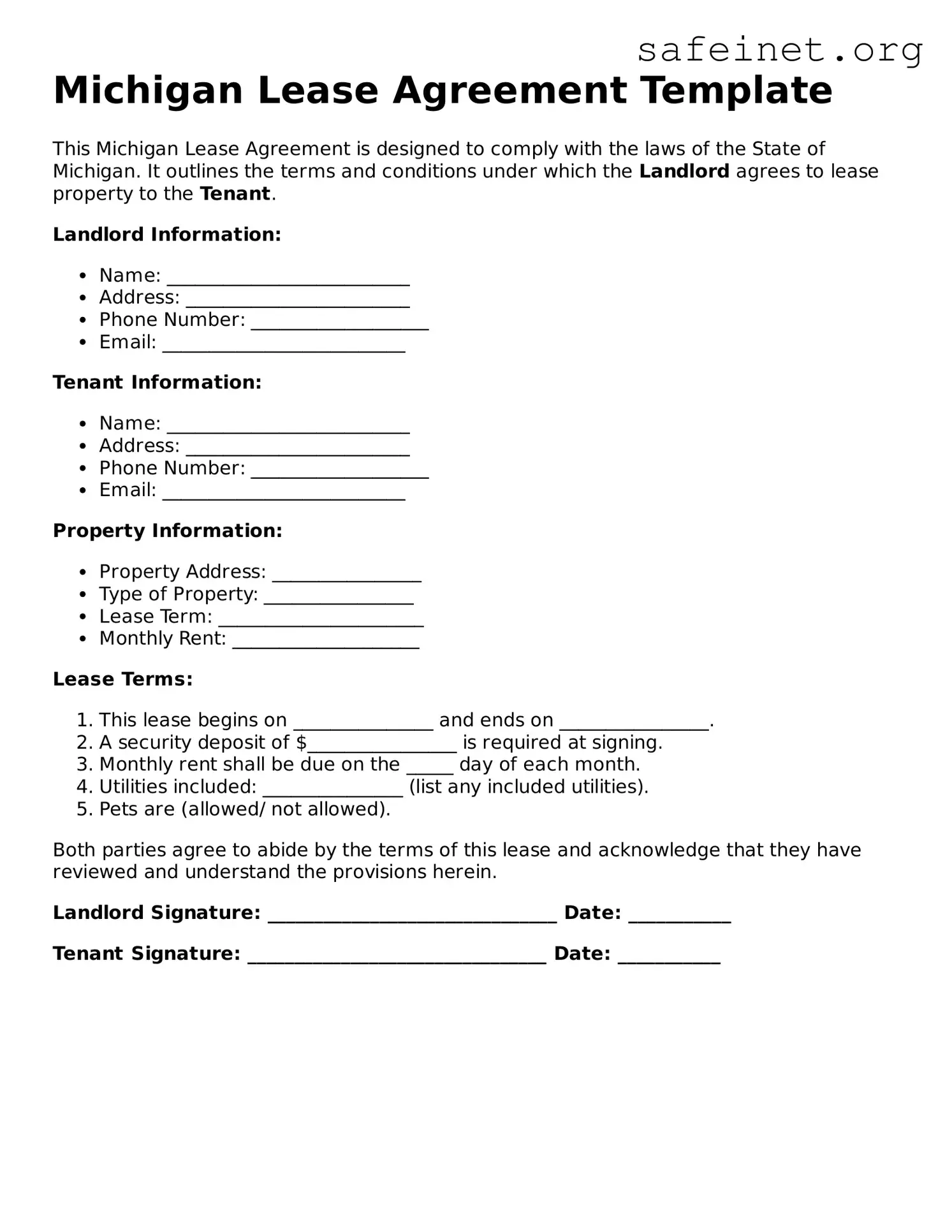What is a Michigan Lease Agreement form?
A Michigan Lease Agreement form is a legally binding document that outlines the terms and conditions between a landlord and a tenant for renting residential or commercial property. This agreement specifies details such as the rental amount, payment due dates, duration of the lease, and obligations of both parties. It aims to provide clarity and protection to both the landlord and tenant throughout the leasing period.
What key components should be included in the Lease Agreement?
Key components of the Lease Agreement include the names and contact information of the landlord and tenant, a description of the property being leased, the lease term, rental payment details, security deposit information, maintenance responsibilities, and conditions for terminating the lease. Additional clauses may cover pet policies, subletting, and any other rules that are important to the landlord or the tenant.
How long is a typical lease term for residential properties in Michigan?
In Michigan, residential lease agreements can vary in duration. Most commonly, lease terms range from one year to month-to-month arrangements. Shorter leases, such as six-month agreements, are also available. The agreed duration should be clearly stated in the lease to avoid any future disputes regarding lease expiration and renewal processes.
Can a landlord raise the rent during the lease term?
Generally, a landlord cannot increase rent during the agreed lease term unless the lease specifically allows for such adjustments. However, for month-to-month leases, landlords may raise rent after giving proper written notice, which is typically one month in Michigan. It's essential to review the lease agreement for specific terms regarding rent increases.
What happens if a tenant wants to break the lease early?
If a tenant wishes to break a lease early, the terms of the lease agreement will dictate the consequences. Many Michigan leases contain clauses about early termination, which may require the tenant to pay a penalty or forfeit their security deposit. It’s advisable for tenants to communicate their intentions with the landlord to explore potential options, such as finding a replacement tenant or negotiating terms for early release.
Is a security deposit required in Michigan?
Yes, landlords in Michigan can require a security deposit as part of the lease agreement. The amount is typically equivalent to one and a half months' rent. This deposit serves to protect the landlord against damages or unpaid rent. Michigan law mandates that landlords return the security deposit within 30 days after the tenant moves out, provided no damages or financial obligations remain.
